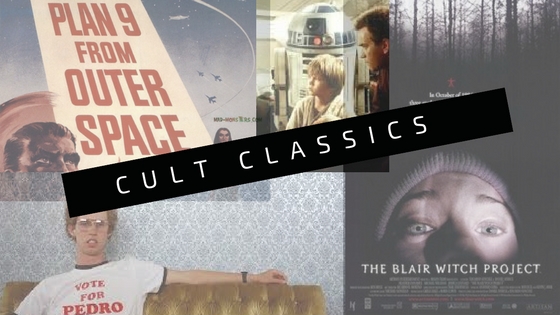It is a Friday night, and your whereabouts should be anywhere but at home with your parents. However, your parents insist on a family movie night. Reluctantly, you give in and start setting up Netflix, but all of the sudden one of your parents whips out a DVD. “It’s a cult classic!” they say as they pop it into the DVD player that you didn’t even know you have.
Today, the term ‘cult classic’ is thrown around and it can often be used without knowing what it means. One might think that a movie must be of a certain age to be called a ‘cult classic.’ Others might say a movie must be original with a distinct and enthralling storyline. But besides transcending time and being a milestone in the history of cinema, what else makes up the criteria?
According to the British Broadcasting System, otherwise known as the BBC, there is no particular genre that makes a movie a classic. In some cases, a cult classic can be a “celebration of poor craftsmanship,” putting the movie into the category of ‘so-bad-it’s-good.’ Ed Wood’s “Plan 9 from Outer Space” would be an example of that, as it is repeatedly named a candidate for one of the worst films of all time. Yes, I know, astonishing. How could a film that has “continuity errors and scenes where actors visibly read from scripts” possibly be a hit? Most people think it’s the laughable quirks and flaws that make it an exception.
What’s even more surprising is that cult classic films are frequently low-budget. For instance, what started out as a $60,000 budget film in 1999, “The Blair-Witch Project” surpassed all expectations and earned 249 million dollars along with its cult classic label. Only five years later, Fox Searchlight came out with “Napoleon Dynamite,” which had a budget less than $400,000, but grossed over $46,000,000.
It all may seem confusing because one would think that successful, timeless movies must involve an Academy Award winning team and an astronomical budget. Although this applies for some cult favorites, they are by no means requirements for a successful movie. So if a low budget film that is as tacky as Ed Wood’s “Plan 9 from Outer Space” could be just as much as a ‘cult classic’ as the widely-praised “Star Wars Episode I: The Phantom Menace,” a $115 million production, what do they have in common?
It all boils down to one simple denominator: you, the audience.
No combination of money and genre can create the perfect formula of an iconic movie. As studies display, it’s the message the film conveys and how it makes one feel to qualify a film as outstanding. A classic movie might strike the audience with a sense of nostalgia, joy, or poignancy, which leaves them wanting more. Cult classics challenge the norms of film, not necessarily in a good way, but that’s what makes them so appealing. So next time your parents recommend a ‘cult classic’ film, give it a try. You might be pleasantly surprised.
Amelia Chen
graphics editor
Graphics: Amelia Chen

